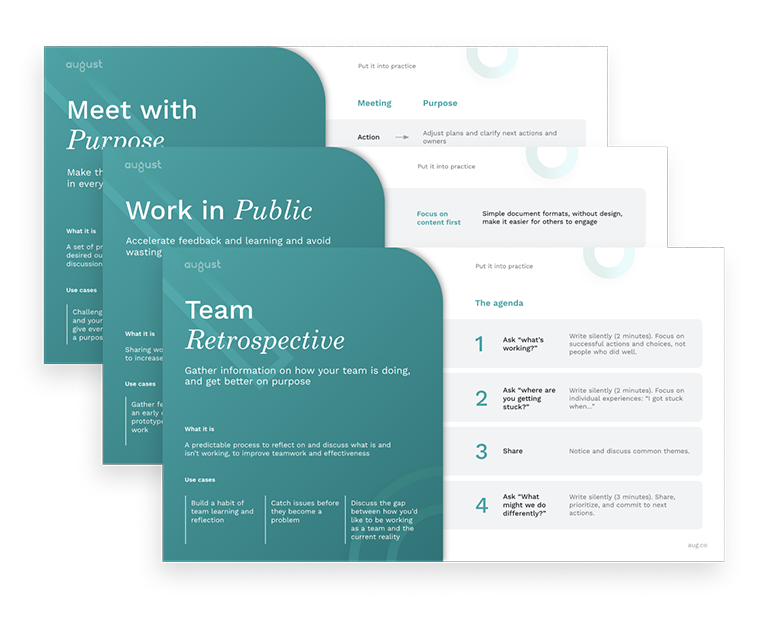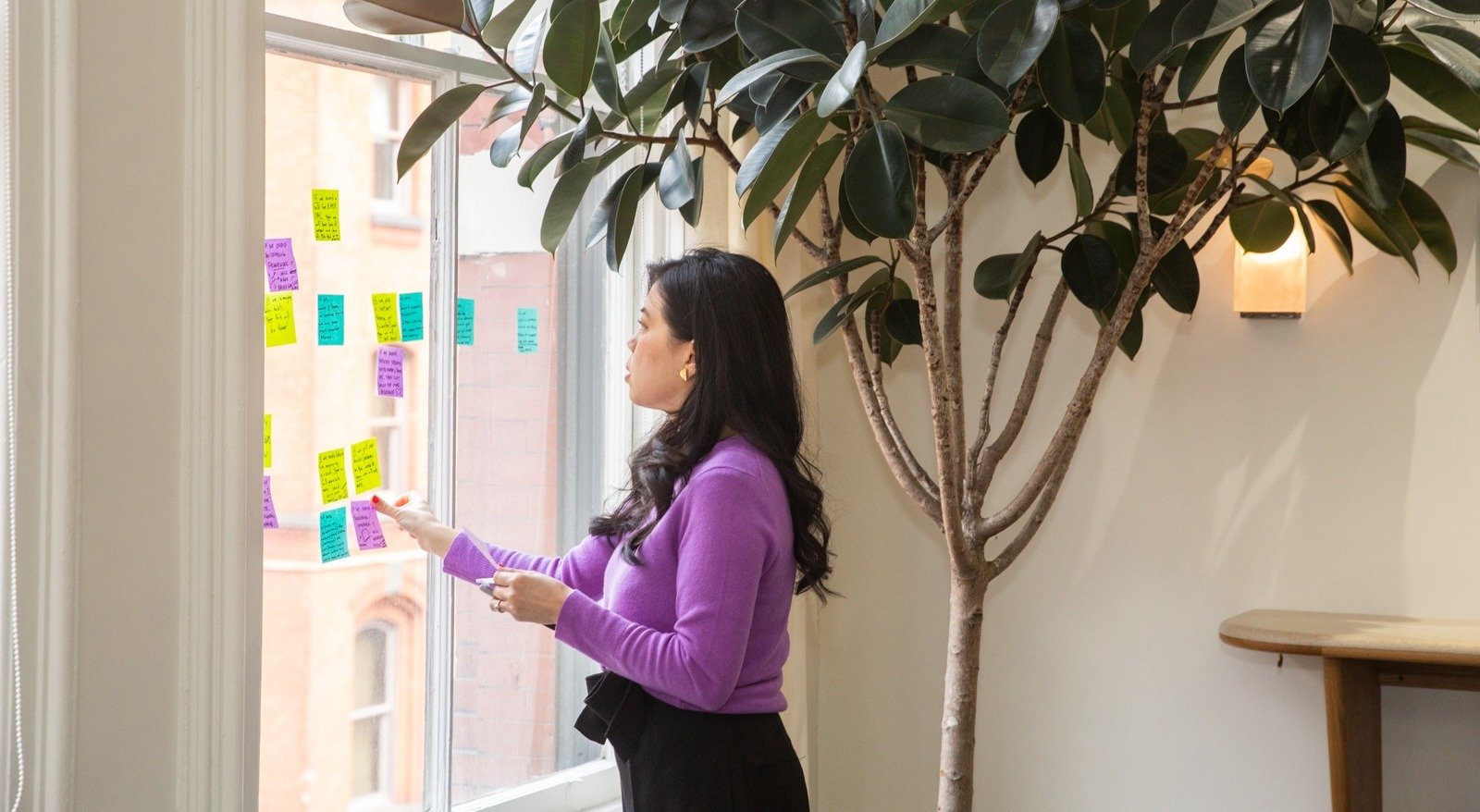Published October 30, 2024 | Updated October 30, 2024 | 5 minute read
A round is a ritualized moment in a meeting where everyone speaks one at a time, taking turns, without interruption, in answer to a given prompt.
Sounds simple enough – and it is. But it’s a powerful practice for building psychological safety, increasing agility, and ensuring that all voices are heard.
Rounds come in different flavors:
- A Check-In round to kick off a meeting: “What has your attention as we start this meeting?”
- An Agenda round to share topics of discussion during the meeting
- A Creative round to gather everyone’s ideas on a given prompt
- A Question round to ensure everyone has a clear understanding of what’s being discussed
- A Reaction round to collect feedback from every participant – including those who might otherwise keep their dissent to themselves
- A Closing round to unify the group on takeaways and next steps
Whether with colleagues or clients, I’ve found rounds to be a game-changing exercise. They’re simple, but incredibly effective at building team trust and uncovering hidden insights and solutions.
Here are 4 reasons to add rounds to your everyday team practices
1. Rounds are an easy hack to psychological safety.
A check-in round quickly builds empathy and understanding between colleagues who may only have professional relationships. It lets people know that it’s okay to share what’s going on for them, and encourages people to bring more of their “whole selves” to a meeting.
These human-centered benefits are amplified by other types of rounds. A creativity round ensures everyone gets to share their ideas, without putting any one person in the hot seat. A reaction round offers everyone a chance to share concerns or critiques without singling anyone out.
Psychological safety is critical for effective organizations. Rounds offer a simple, habitual way to build psychological safety through everyday teaming.
2. Rounds set the expectation that everyone gets a voice.
Rounds establish that the meeting will include an equal share of voices and an ordered flow to the conversation. They encourage engagement and contribution from all participants, which helps ensure that people’s time in meetings is always purposeful and never wasted.
Rounds also establish a clear understanding of who’s facilitating, without creating unnecessary bureaucracy or hierarchy. Over time, as rounds are incorporated into different types of meetings, they empower different people to step into leadership at different moments based on their relationship to the topic at hand.
For beginner facilitators, rounds provide an opportunity to pause, check in with everyone, and build your confidence. For veteran facilitators, they’re a great way to ensure you’re really hearing everyone’s perspective.
3. Rounds build inclusion in a tangible, action-based way.
It’s a well-researched reality that team members who hold marginalized identities are more frequently interrupted in meetings, their ideas stolen and their voices sidelined, than peers who hold more privileged identities.
As well as an obvious moral reason, there’s a business reason to make sure that this doesn’t happen: more inclusive groups have better ideas.
Rounds are a simple, effective way to help mitigate those biases and make sure every voice gets its say. This helps build inclusion and equity on a granular level.
Rounds also help draw out perspectives from people who are just naturally quieter. As an introvert, I know what it’s like to feel unable to contribute to a dynamic conversation in a meeting. Rounds help ensure that my presence is felt, and make it easier for me to speak up spontaneously at other times.
Rounds support people whose first language isn’t the one being used in the meeting. They support neurodivergent team members who need extra processing time. They support people who hold dissenting viewpoints but don’t want to cause a ruckus. The benefits are numerous – I could go on!
4. Rounds help streamline complexity and support agility.
Rounds are an amazing tool for navigating complicated meeting dynamics. When your meeting agenda includes a tricky retrospective or a complex decision, a round can serve as a reset, an opportunity to take the temperature of the room and make sure the meeting is on the right track.
When tensions rise or people start getting confused or frustrated, a round is a quick shorthand way to bring everyone back together. It can help facilitators redirect an agenda if needed, or surface hidden obstacles that need to be addressed separately.
Rounds provide a useful format for acknowledging barriers and identifying complexities, while keeping things moving forward.
Try Rounds in your next meeting!
At first, taking a brief pause to hear from everyone in the group might feel like an interruption. But it will save time in the long run, as perspectives are surfaced and integrated in real time.
Ultimately, the psychological safety, inclusion, and agility that emerge from this simple practice will lubricate the gears of your team, helping you work faster and more effectively, while building a healthier, more supportive team culture.


.jpg)







